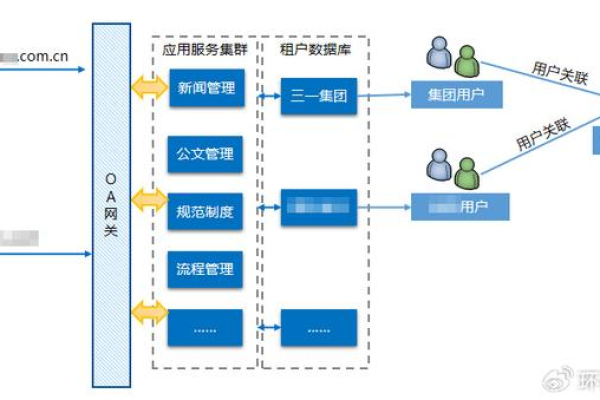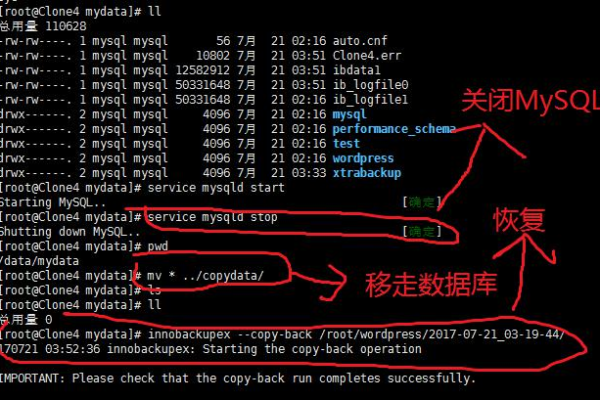云服务器如何备份数据库
- 行业动态
- 2023-12-04
- 3
云服务器如何备份数据库
随着云计算技术的不断发展,越来越多的企业和个人选择将数据存储在云服务器上,云服务器为用户提供了便捷的数据存储和访问方式,但同时也带来了数据安全和备份的问题,本文将详细介绍如何在云服务器上备份数据库。
1. 为什么需要备份数据库?
数据库是企业和个人存储和管理数据的重要工具,一旦发生数据丢失或损坏,可能会导致重大损失,定期备份数据库是保障数据安全的重要措施,备份还可以用于数据恢复、迁移和测试等场景。
2. 云服务器备份数据库的方法
云服务器提供了多种备份数据库的方法,主要包括以下几种:
(1)手动备份:用户可以通过命令行或图形界面手动执行备份操作,这种方法适用于数据量较小、备份频率较低的场景。
(2)定时备份:用户可以设置定时任务,按照预设的时间间隔自动执行备份操作,这种方法适用于数据量较大、备份频率较高的场景。
(3)增量备份:只备份自上次备份以来发生变化的数据,这种方法可以节省存储空间和备份时间,适用于数据更新频繁的场景。
(4)全量备份:备份所有数据,这种方法适用于数据量较小、数据更新不频繁的场景。
3. 云服务器备份数据库的步骤
以阿里云服务器为例,以下是备份数据库的步骤:
(1)登录阿里云控制台,进入数据库管理页面。

(2)选择需要备份的数据库,点击“备份”按钮。
(3)选择备份类型(全量备份或增量备份),设置备份周期和保留时长。
(4)点击“立即备份”按钮,等待备份完成。
(5)备份完成后,可以在“备份列表”中查看备份文件和相关信息。
4. 如何恢复数据库?
当数据库发生问题时,可以通过以下步骤恢复数据库:
(2)选择需要恢复的数据库,点击“恢复”按钮。
(3)选择需要恢复的备份文件,设置恢复时间点和目标实例。
(4)点击“立即恢复”按钮,等待恢复完成。

(5)恢复完成后,可以在“实例列表”中查看恢复后的数据库实例状态。
5. 如何迁移数据库?
当需要将数据库迁移到其他云服务器或物理服务器时,可以通过以下步骤进行迁移:
(1)在原服务器上创建数据库的备份文件。
(2)将备份文件下载到本地或其他服务器。
(3)在新服务器上安装相应的数据库软件。
(4)使用备份文件在新服务器上创建数据库。
(5)将原服务器上的数据库数据导入新服务器上的数据库。
6. 如何测试数据库备份?

为了确保数据库备份的有效性,建议定期对备份文件进行测试恢复,以下是测试数据库备份的步骤:
(1)在原服务器上创建一个临时数据库。
(2)向临时数据库中添加一些测试数据。
(3)对临时数据库执行一次全量或增量备份操作。
(4)删除临时数据库及其备份文件。
(5)使用刚刚创建的备份文件在原服务器上恢复临时数据库。
(6)检查恢复后的临时数据库中的数据是否与之前一致。
通过以上步骤,可以确保云服务器上的数据库得到有效的备份和保护,定期测试备份文件可以提高数据恢复的成功率,降低因数据丢失或损坏带来的风险。















